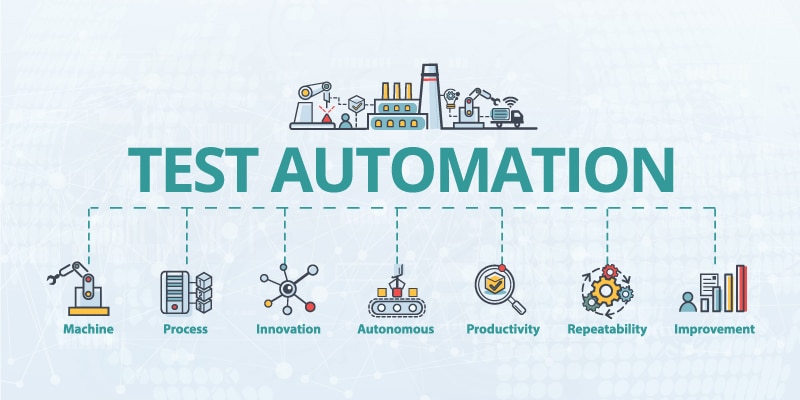Thanks to technology, test automation tools and methods keep evolving. Companies enjoy greater efficiency and streamlining of processes. It provides an excellent opportunity to cover large test areas.
With everyone moving to the digital space, there is a greater need for software testing. It ensures high-quality products that meet the expectations of consumers. But, some hiccups come with test automation.
We will explore the trends and challenges we can expect in 2021 below.
2021 Top Trends in Test Automation
1. DevOps and Agile To Control Quality and Speed Delivery
Organizations must evolve in how they develop, deliver, operate, and validate their software. Optimal results are achievable with innovation and optimization of test automation tools.
Agile provides a way for companies to adapt to ever-changing requirements. It looks at continuous development requiring flexibility and quick responses to achieve results.
DevOps demands the integration of development and operation processes. It looks at everything that has to do with rules, practices, and relevant tools. It shortens delivery times and higher efficiency. All these occur without compromising the final quality of the software.
Test automation tools provide a way to achieve higher efficiency and quality output. Companies can also free up resources and talents to use in other areas. They can focus on problem-solving, innovation, and so much more.
2. Artificial Intelligence to Power Test Automation Tools
Artificial intelligence takes care of repetitive tasks such as regression testing. While it is not a new concept, it is finding increasing use in software development and research. AI-powered tools provide tons of functionalities. Such include the generation of test data, scripts, and reports.
AI applications give greater reliability. Such can check codes to look for pattern changes. They can change the test scripts without needing human input. We foresee a situation where there is greater dependence on AI for test applications.

The results will be better streamlining of functions and fewer errors in the processes. There are opportunities in areas such as:-
- Visual testing will take care of the performance. It also covers the look and feel of apps using imagery technology
- Differential testing to capture learning and segment similarities. It will also help integrate the use of diverse software builds
- Self-healing automation that identifies function changes and ensures proper updates. It helps prevent failures during process applications
- Declarative testing allows for specific tests in domain-specific or natural language settings.
But, AI cannot replace the manual input companies need for writing test cases and scripts. They must still invest in looking for the right talent to manage the processes.
3. Code Test Automation
Codeless automation testing is catching on. We predict it will continue to grow in 2021. It eliminates the need to write code when running tests. You reduce the time and effort that goes into manual testing.
In the more traditional testing, there was a need to create separate scripts for every test case. In large projects, the resource allocation for such tests is huge. Codeless testing is easy to use and allows for the fast-tracking of the jobs.
4. Continuous Test Automation
Continuous testing starts from the very beginning of the software development cycle. It helps in fixing bugs and errors before moving to final production. You don’t have to solve problems later on in the development cycle.
5. Cloud Services and Mobile App Testing
Cloud services provide several advantages when it comes to automation testing. It is reliable, easy to maintain, and low cost. Testers enjoy flexibility, scalability, and less limitation on devices and test environments. The best part is you do not need to set up infrastructure to take advantage of cloud services.
There is also an increase in mobile apps. It makes sense since many people use their mobile devices to access the internet. Companies must invest in automated mobile testing to meet customer demands.
Challenges Facing Test Automation
Difficulty in Implementation
The reality is that test automation is not easy to put in place. Many practitioners consider software testing tasks a challenge they need to overcome. Testing requires technical skills for the design and maintenance of the framework.
The teams must also have the right testing approach, which requires an understanding of several factors. Such as knowing how to reduce maintenance and implementation of test suites and scripts. It is also important to generate relevant metrics to test the reports.
Challenges with Open-Source Platforms
Open source platforms have been a godsend to many companies. They are affordable and easy to access. The input from the communities results in quick product rollouts and updates. But, developers work at their own cost and can only give time to core projects when they can.
Lack of financial impetus can slow down the developmental processes. It also makes it harder to adapt to some of the latest technologies. Such include machine learning and artificial intelligence.
Companies that want to take advantage of such platforms must be willing to spend some money. It allows for the development of a proprietary architecture, specific to their needs.
But, therein lies a challenge as well. Some open-source platforms do not allow for the monetization of projects. The company may invest in software development. But, they may still have to make the code available to the public.
High Costs
Companies need a significant amount of capital to invest in test automation. The ROI is unpredictable and may not even be a reality. The challenge is to ensure that they follow best practices if they are to realize any payback.
Such practices include integrating the testing solution with the existing ecosystem. They must also have the correct Analytics to measure the output of each application.
Confusion Arising From Market Fragmentation
Test automation is garnering a lot of interest. Developers are churning out products to keep up with demand. But, there is too much fragmentation. It leads to incompatible, and in some cases, partial solutions. You may, for example, find test tools that only cover desktop appliances and not mobile.
The challenge is in finding one platform that delivers on the testing specifications. It should cover manual and automated testing. Such should be applicable across different platforms, coding language, and software layers. There exists a fantastic opportunity for developers to provide the perfect solution.
Final Thoughts
We have looked at some of the trends and challenges facing test automation in 2021. Companies can increase efficiency and put out better quality products. Applying test automation early in the development cycle saves on time and money. As much as there are challenges, the outlook is positive.













Leave a Reply